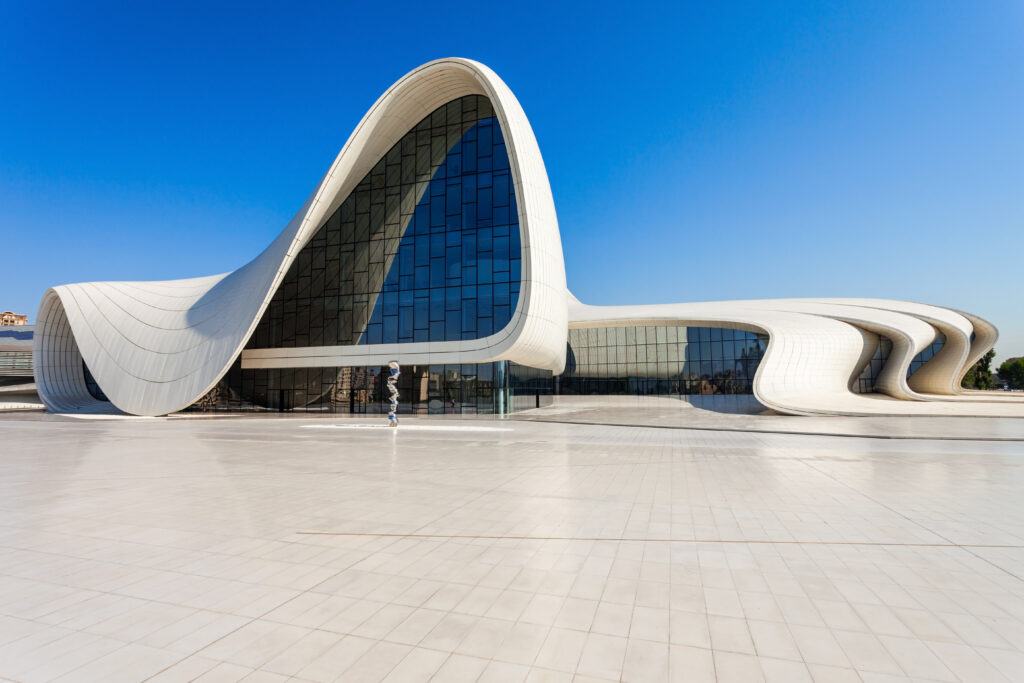Design Visionary: Zaha Hadid
Zaha Hadid was an Iraqi-British female architect who broke barriers in a male-dominated field. Her legacy is marked by her innovative designs, striking visual language, and her remarkable ability to push the boundaries of architecture. Her contribution to the field has been recognized globally, and her work has left a lasting impression on the world of architecture.
Zaha Hadid was born on October 31, 1950, in Baghdad, Iraq. She studied mathematics at the American University of Beirut before pursuing architecture at the Architectural Association School of Architecture in London. After graduation, Hadid worked for several years as an architect in London before founding her own firm, Zaha Hadid Architects, in 1980. Hadid’s early work was characterized by her focus on deconstructivism and her interest in pushing the boundaries of traditional architectural forms. Her designs often incorporated non-rectangular shapes and sharp angles, which were a departure from the more traditional, boxy shapes that were prevalent at the time. Despite the unconventional nature of her designs, Hadid quickly gained a reputation for her innovative approach to architecture, and her work began to gain recognition around the world.
Zaha Hadid was known for her distinctive style of architecture, which was characterized by its use of fluid, organic forms and its innovative use of technology. Her designs often incorporated sweeping curves, asymmetrical shapes, and sharp angles, and she was particularly known for her use of parametric design, which allowed her to create complex, dynamic structures. Hadid’s work was often associated with the architectural style known as “deconstructivism,” which was characterized by its rejection of traditional architectural forms and its emphasis on fragmentation, non-rectilinear shapes, and unpredictability. However, her work also incorporated elements of other styles, such as the futuristic designs of the “high-tech” movement and the fluid, organic forms of the “blobitecture” trend.
Overall, Hadid’s style was highly innovative and avant-garde, and it pushed the boundaries of what was possible in architectural design. Her work has been influential in shaping the course of contemporary architecture, and her legacy as an architect continues to inspire designers and architects around the world.

Zaha Hadid became famous for her design of the Vitra Fire Station, located in Weil am Rhein, Germany. Completed in 1993, this building was one of Hadid’s first major commissions and is often considered to be one of her most iconic works. The building’s sharp angles, asymmetrical form, and use of concrete were a departure from the more traditional fire station designs, and it was widely praised for its innovative design. The Vitra Fire Station helped to establish Hadid’s reputation as a trailblazing architect, and it paved the way for many of her later projects.
Over the course of her career, Hadid designed a wide range of buildings, from small residential projects to large-scale public works. Some of her most notable projects include the Heydar Aliyev Center, Baku, Azerbaijan and the Guangzhou Opera House, Guangzhou, China

Heydar Aliyev Center, Baku, Azerbaijan: Completed in 2012, this project was one of Hadid’s last before her untimely death in 2016. The building’s sweeping, flowing forms were designed to evoke the natural landscape of Azerbaijan, and it has become a symbol of the country’s modernization and progress.

Guangzhou Opera House, Guangzhou, China: Completed in 2010, this project was one of Hadid’s largest and most complex. The building’s sweeping, undulating forms were designed to evoke the fluidity of water, and it has become an iconic landmark in Guangzhou.
Zaha Hadid’s legacy as a female architect is significant. She was a trailblazer in a field that has traditionally been dominated by men, and she proved that women could succeed and excel in architecture. Her work has inspired countless young architects, both male and female, and has helped to push the boundaries of what is possible in architectural design. Hadid was also a champion of diversity and inclusivity in architecture. She believed that architecture should be accessible to all people, regardless of their background or socioeconomic status, and she worked tirelessly to promote this vision throughout her career. She also believed in the power of architecture to transform communities and improve people’s lives, and many of her projects were designed with this goal in mind. For more inspiration, check out our previous posts on other design and architecture visionaries Charlotte Perriand and Mies van der Rohe.
